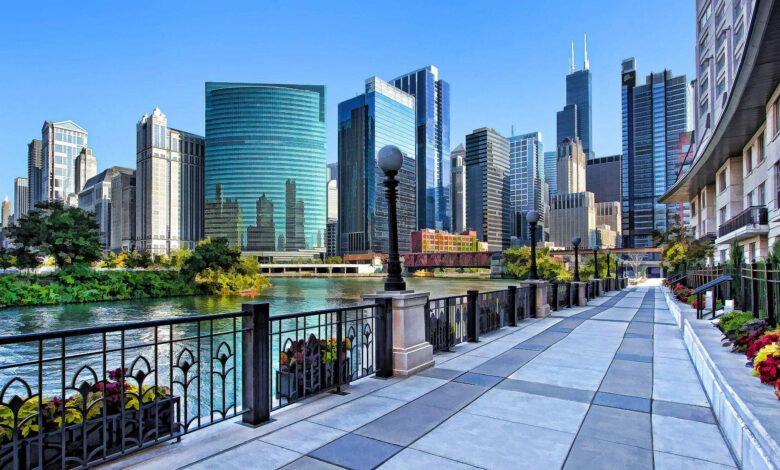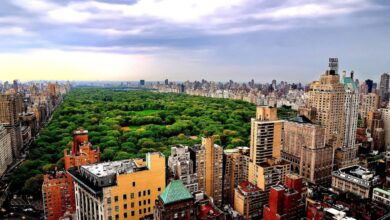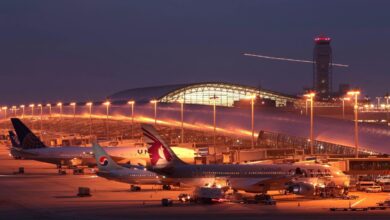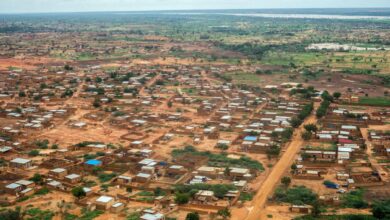What is the Population of the Chicago Metropolitan Area?

The Chicago metropolitan area, often referred to as Chicagoland, is one of the most populated regions in the United States. It’s not just the city itself that counts; the area includes several surrounding counties across three states—Illinois, Indiana, and Wisconsin. This broad area is a vibrant hub of activity and culture, playing a significant role in the overall dynamics of urban America. Let’s dive into what the population looks like today, the factors influencing its changes, and what that means for people living in and moving to the area.
Understanding the Size of the Chicago Metropolitan Area
The Chicago metropolitan area is vast, stretching far beyond the city’s borders. It includes cities and towns with varying population sizes and characteristics, contributing to its rich diversity. The question, “What is the population of Chicago?” often refers to this larger area rather than the city alone. As of recent estimates, the population of the Chicago metropolitan area is approximately 9.5 million people. This makes it the third-largest metropolitan area in the United States, following New York City and Los Angeles.
Demographics and Diversity
Chicago’s population is as diverse as its culture. The area is home to a wide array of ethnicities and nationalities, making it a melting pot of cultures. This diversity is reflected in the neighbourhoods, food, festivals, and the daily life of its residents. Each community brings its unique flavour to the city, from the vibrant murals in Pilsen to the bustling markets in Chinatown.
Factors Influencing Population Growth
Several factors contribute to the population dynamics of metro Chicago. These include economic opportunities, quality of education, and the overall lifestyle the area offers. Chicago’s economy is robust, with a strong presence in industries like finance, technology, manufacturing, and transportation. These sectors attract professionals and families looking for employment opportunities and a high standard of living.
Education also plays a critical role in drawing people to the area. Chicago boasts some of the nation’s top universities and research institutions, which not only pull in students from around the globe but also foster innovation and job creation in various fields.
However, it’s not just about jobs and schools. The quality of life in Chicago, characterised by its world-class museums, parks, and entertainment options, also makes it an attractive place to live. The city’s architecture, from the iconic Willis Tower to the historic homes in Oak Park, adds to its allure, drawing tourists and new residents alike.
Challenges Facing the Chicago Metropolitan Area
Despite its many attractions, Chicago faces challenges that affect its population dynamics. One major issue is housing affordability. As in many large cities, finding affordable housing can be difficult, particularly in the more desirable neighbourhoods. This challenge can influence people’s decisions to move to or stay in the area.
Another significant challenge is crime. Some parts of Chicago struggle with high crime rates, which can impact the quality of life and influence population trends. Addressing these issues is crucial for maintaining the area’s attractiveness and ensuring it continues to grow and thrive.
Future Trends
Looking forward, the population of the Chicago metropolitan area is expected to continue evolving. Urban renewal projects, improvements in public safety, and investments in education and infrastructure will likely play key roles in shaping its future. The city’s ability to adapt to the needs of its residents and to the changing economic landscape will be critical in sustaining its growth and vibrancy.
Conclusion
In conclusion, the population of the Chicago metropolitan area is a complex and ever-changing tapestry. With its diverse communities, strong economy, and rich cultural offerings, Chicago continues to be a key player on the national and international stage. For businesses like SociallyFame, understanding these dynamics is essential to connecting with the local community and enhancing their engagement in such a vibrant market.
Frequently Asked Questions (FAQs):
How has the population of the Chicago metropolitan area changed over the past decade?
The population of the Chicago metropolitan area has seen fluctuations over the past decade, with slight declines in some years and modest growth in others. Factors such as economic conditions, housing market changes, and demographic shifts have influenced these trends. Overall, while the city has faced challenges like out-migration, it continues to attract a diverse population due to its robust job market and cultural richness.
What are the main factors driving population growth in metro Chicago?
Population growth in metro Chicago is primarily driven by a combination of factors including economic opportunities, educational institutions, and cultural attractions. The area’s diverse economy offers jobs across sectors such as finance, technology, and manufacturing, attracting professionals from around the globe. Additionally, renowned universities and cultural institutions draw students and visitors who often decide to make Chicago their home.
How does the cost of living in Chicago affect its population?
The cost of living in Chicago, particularly housing affordability, significantly impacts its population dynamics. While Chicago is generally less expensive compared to other major cities like New York and San Francisco, certain areas within the metro region can be quite pricey, which may deter some individuals from living in or moving to those neighborhoods. Efforts to provide more affordable housing options are key to retaining and attracting residents, ensuring a diverse and thriving community.




